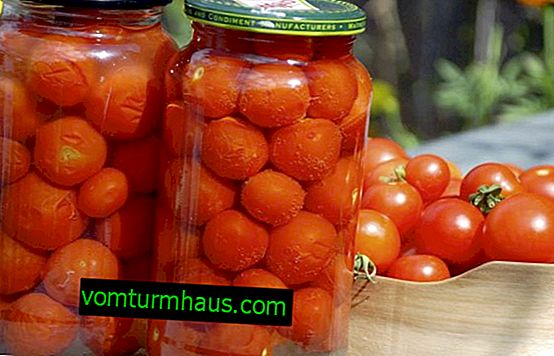Why yucca leaves turn yellow
Yucca is a small palm-shaped indoor tree, characterized by high unpretentiousness to care. However, no matter how the flower growers try, no one is safe from the mistakes of its cultivation, therefore it is better to determine in advance the possible causes of yellowing and drying in order to save the plant. So why the leaves turn yellow and how to deal with it - read on.
Improper care or conditions
A significant proportion of problems with indoor plants is due to violation of the requirements for their care. Yucca is no exception to this rule, so before proceeding with specific actions, evaluate the following possible reasons.
Did you know? Sometimes a yucca is called a denim tree, because its fibers are still used in the textile industry, including when creating jeans (according to historical data, the first such pants were sewn from the fibers of this tree).
Inadequate or heavy watering
The aforementioned palm-shaped tree has the ability to accumulate moisture in its trunk, so it is not difficult to overfill the plant. On average, yucca is watered 1-2 times a week, and even less often in winter (the soil in the pot should dry out about half its volume). The irrigation fluid must be at room temperature, and in order not to make a mistake in this, just leave it for several days in an open container. With a strong overflow, you will have to get the plant out of the pot and, after removing the rotten roots, transplant it into another container. However, you should not have high hopes for the properties of the yucca trunk, because drying out for the root system is no less dangerous than its overmoistening and can also lead to yellowing of the leaves.

Low light or direct sunlight
Lack of, or, conversely, an overabundance of sunlight is another common cause of yellowing of false leaf palm leaves. In order to ensure normal photosynthesis processes in conditions of limited natural light, it is necessary to install powerful sources of scattered light in the room, which will ensure daylight hours of at least 10 hours. If the plant received burns due to very bright direct radiation, then move it to a more shaded place and evaluate the result of the changes in a week.

Dry air
This problem often appears in the cold season, when heating appliances are turned on in the room. Yucca prefers slightly higher air humidity, so it is advisable to place it away from batteries or electrical appliances. Next to the pot, you can put an open container with water and periodically spray leaves from the spray bottle.
This also applies to cases of growing false palms on closed balconies in the summer. In the warm season (especially when growing yucca on the balcony), it is advisable to spray the leaves only in the daytime, so that by the time the night temperature drops, they will completely dry out. Otherwise, the development of rot or other ailments caused by high humidity cannot be ruled out.
Important! Not always yellowing and falling of pseudopalma leaves indicates a problem. Often this is a completely natural process, of course, if only the lower leaf plates fall off, and the upper ones do not change their state and look completely healthy.
Inappropriate temperature
The optimum temperature values for the tree will be + 20 ... + 25 ° C in summer and not lower than + 8 ... + 10 ° C in the cold season. Yellowing of the leaves in this case is associated with a sharp transition from heat to cold, therefore, to avoid such problems, just moderate the temperature fluctuations during the off-season.

Drafts
The dark yellow color of the entire leaf plate or only its tips sometimes indicates exposure to drafts, especially in the cold season. With the advent of autumn, try not to leave the yucca pot on the open balcony, especially in the evening or at night.
Lack of minerals
During intensive growth, yucca is fed every month, introducing into the soil mineral (for example, "Master" or "Biopon") and organic nutritional compounds. The prepared working solution is poured into the spray gun and the inner parts of the leaves are sprayed with it, trying to process the largest possible area. If this is not done, then the plant’s consumption of nutrients will be very high, which is often expressed in the same yellowing or drying out of individual parts of the false palm.
Find out how and how to feed indoor plants at home.
Pests
The change in the appearance of the plant can be explained by the activity of pests. Among them, the most dangerous for yucca will be a spider mite, thrips and scale insects, each of which can provoke yellowing and twisting of leaves. To promptly fix the problem and protect the plant from death, it is important to know about the first signs of an insect invasion.
Spider mite
A favorable factor for the rapid reproduction of spider mites is an increase in temperature while reducing air humidity. The pest comes to yucca from other plants, and you can notice it by the characteristic light grains in the lower part of the leaf plates. If the insect has been living on the yucca for a long time, then the appearance of a thin silver web, which braids not only the leaves, but also the place of attachment of the sheet, is possible. Over time, the affected leaves lose their usual color and become covered with yellow shapeless spots.

Important! The spider mite is doubly dangerous , because not only does it suck out all the juices from the plant, but it can also be a carrier of gray rot and other flower ailments that become noticeable soon after it reaches the yucca.
Thrips
Thrips is one of the most common pests of not only ornamental, but also agricultural crops. The reason for its appearance is new, infected plants in the house, and the reproduction of insects is facilitated by dry air and reduced humidity in the room. You can notice a new resident by the characteristic silver pattern on the surface of the sheets, which consists of chaotic strokes.

In some cases, treatment with mineral oils (a solution of 1 liter of water and a few drops of kerosene or machine oil) may help, but it will be more reliable to spray the yucca with special chemicals: for example, Aktara, Iskra, Mospilan or Agravertin. Some of these compounds can be used not only for spraying, but also for watering under the root, thanks to which it is possible to get rid of insects both on the plant and in the soil.
Did you know? Yucca is recommended for people with chronic low blood pressure and respiratory problems.
Shield
If the yucca leaves turn yellow (no matter the lower or upper), and the stem slows down its growth, the activity of the insects can be suspected. It is not difficult to detect them, because they are already visible during a visual inspection of the plant: they are presented in the form of small rounded tubercles of brown, green or yellow color. Usually insects attach to areas along the veins of leaf blades, but can accumulate in the leaf sinuses.
The main reason for their appearance is a violation of the plant’s natural defenses, which is often associated with an excess of nitrogen in the soil or a change in the yucca cultivation conditions: for example, a decrease in light intensity or an increase in air dryness. At the initial stage of pest reproduction, yucca leaves are covered with a sticky secret, which is also one of the most characteristic symptoms of the presence of a problem.

Yellowing, or especially twisting of yucca leaves, cannot be ignored. Almost any of the listed reasons can ruin the false palm tree, so the sooner you take appropriate measures to solve the problem, the more chances to deal with it.



